Anticipating our Newfoundland & Nova Scotia birding trip, I was excited to be traveling to the breeding grounds of some of the migratory warblers that pass through Chicagoland each spring and fall. I thought it would be cool to see them in their summer quarters. Most field guides show a map of the breeding grounds, migratory areas, and non-breeding regions (usually in the south during winter) migratory birds reside in. Here’s a map from Birds of the World of the Chestnut-sided Warbler:
The salmon-shaded area is where Chestnut-sided Warblers breed each summer and as you can see it includes Newfoundland and Nova Scotia (upper right-hand corner islands). Yellow areas are where they are found during migration and the blue areas are where they spend the winter. Other warblers have similar maps; some breeding areas extend farther north, others push farther south in the winter. But in general many small songbirds like warblers and kinglets breed up in Canada so I was eager to see them there.
Since we were talking about Chestnut-sided Warblers let’s take a look at one we saw along the road. It still had its bright chestnut on its flanks (breeding colors).
We saw a male Redstart feeding on insects in the trees.
I can’t recall seeing one Northern Parula during spring migration but found one high in the trees in Newfoundland.
Can’t go to Canada without seeing a Canada Warbler! One of my favorite warblers, with its pink feet and bird yellow eye-ring.
This brightly colored male Bay-breasted Warbler was quite cooperative as it perched just off the road at eye level. They look much different now in the fall, reverting to non-breeding plumage in which you hardly see any color on them at all.
More Canadian songbirds coming up soon.
If you enjoy seeing beautiful pictures of birds from around the world and reading about them Click Here to sign up for our mailing list. Members can post their own GreatBirdPics and learn more about bird photography techniques.

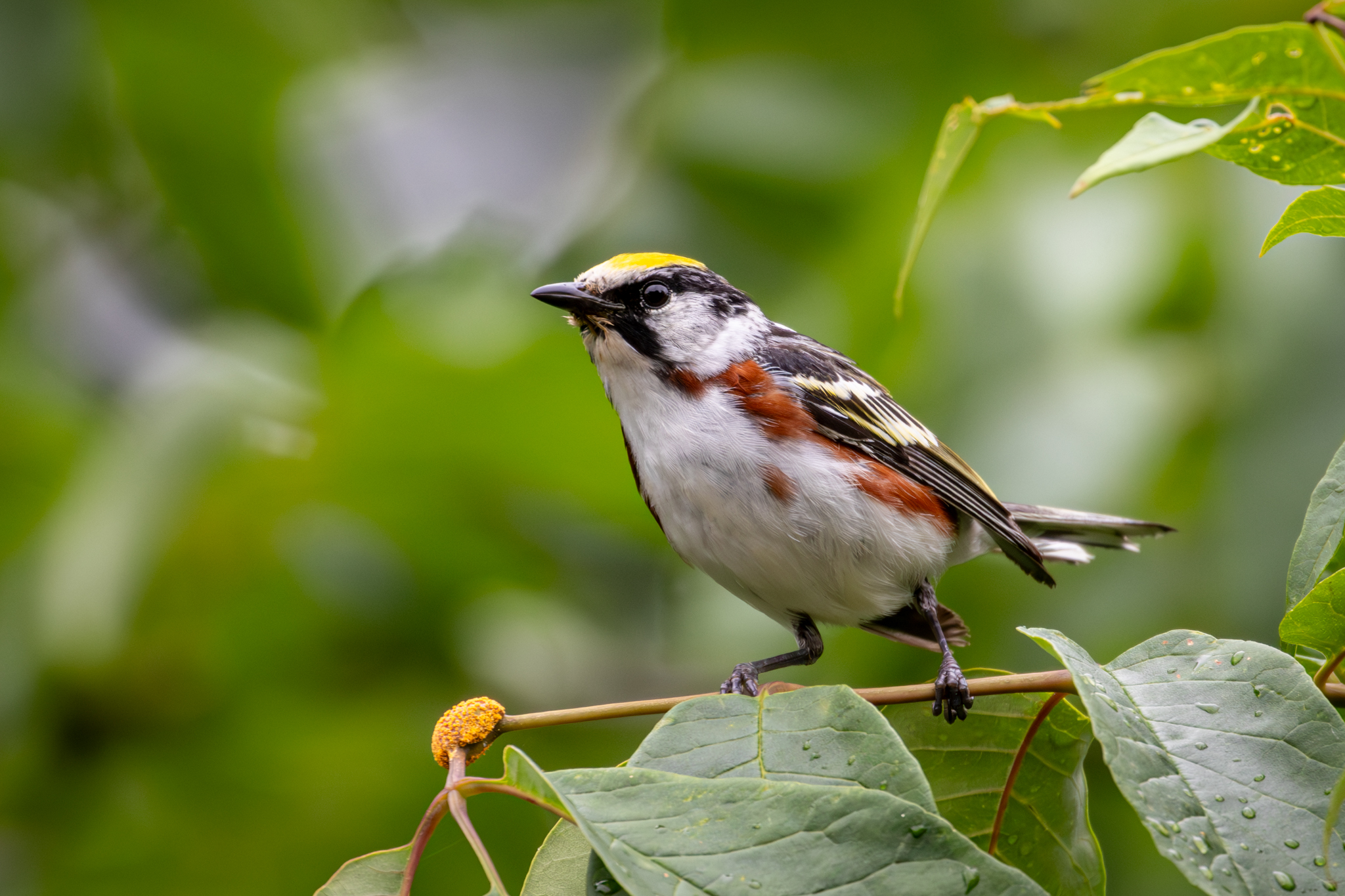
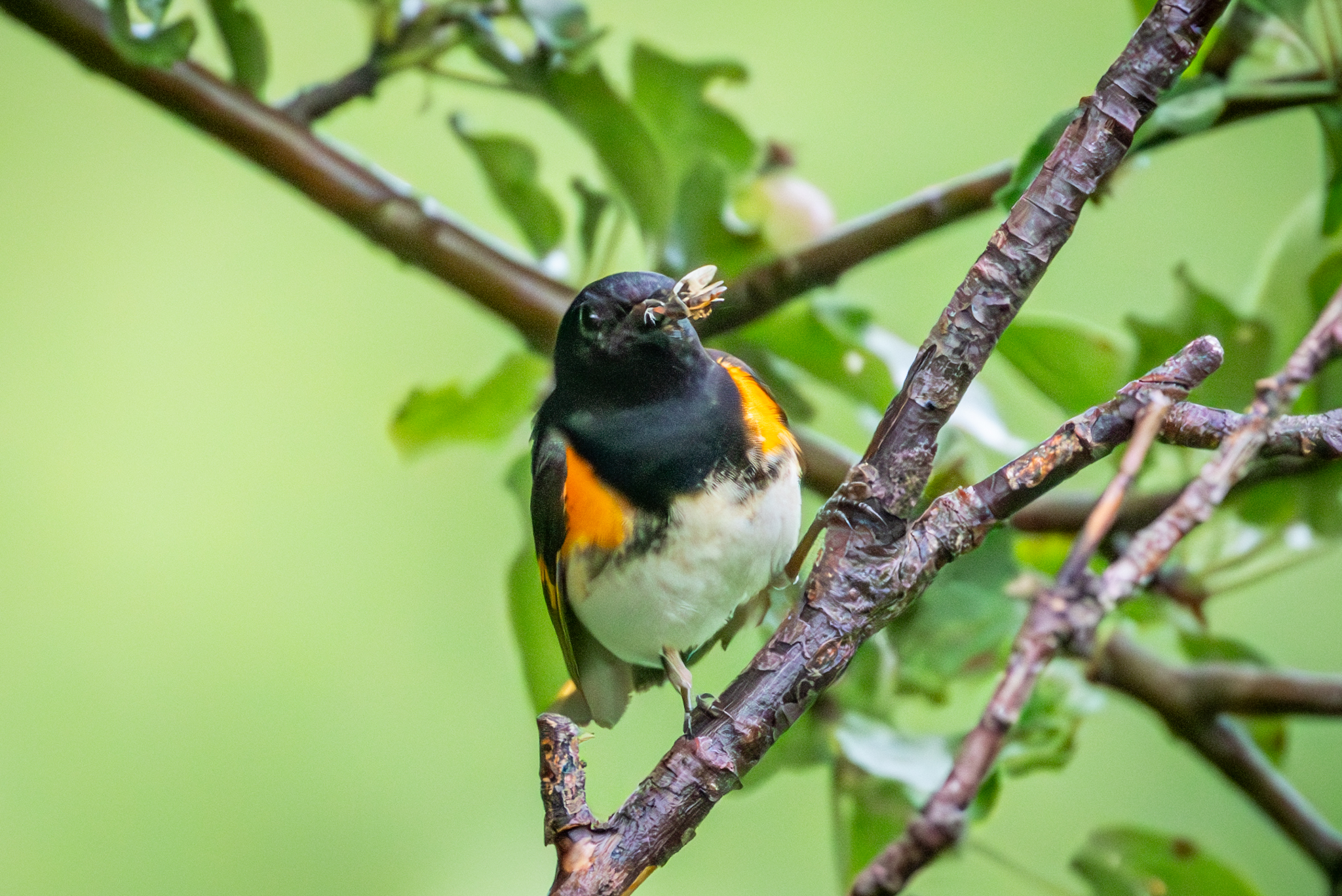
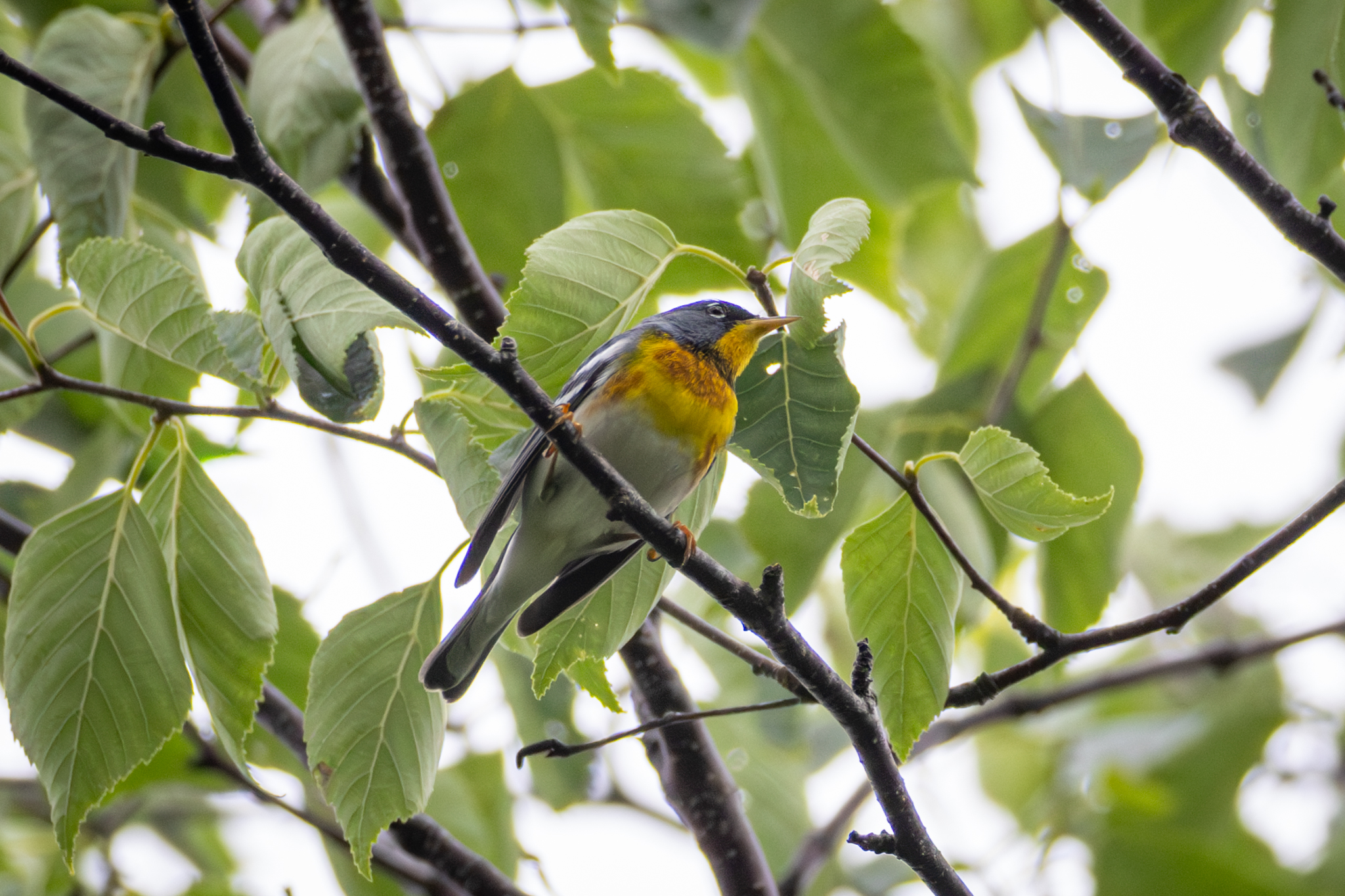
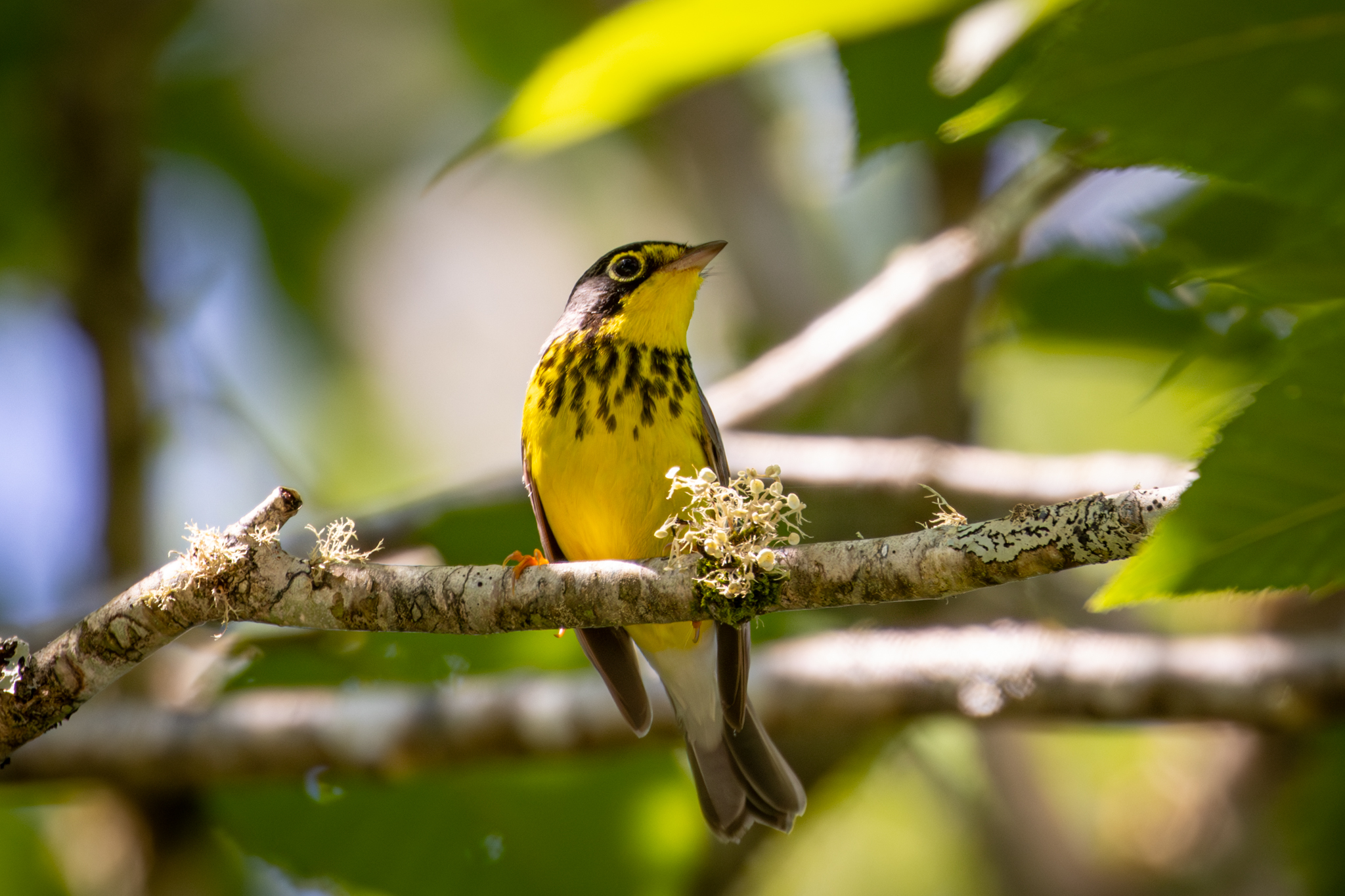
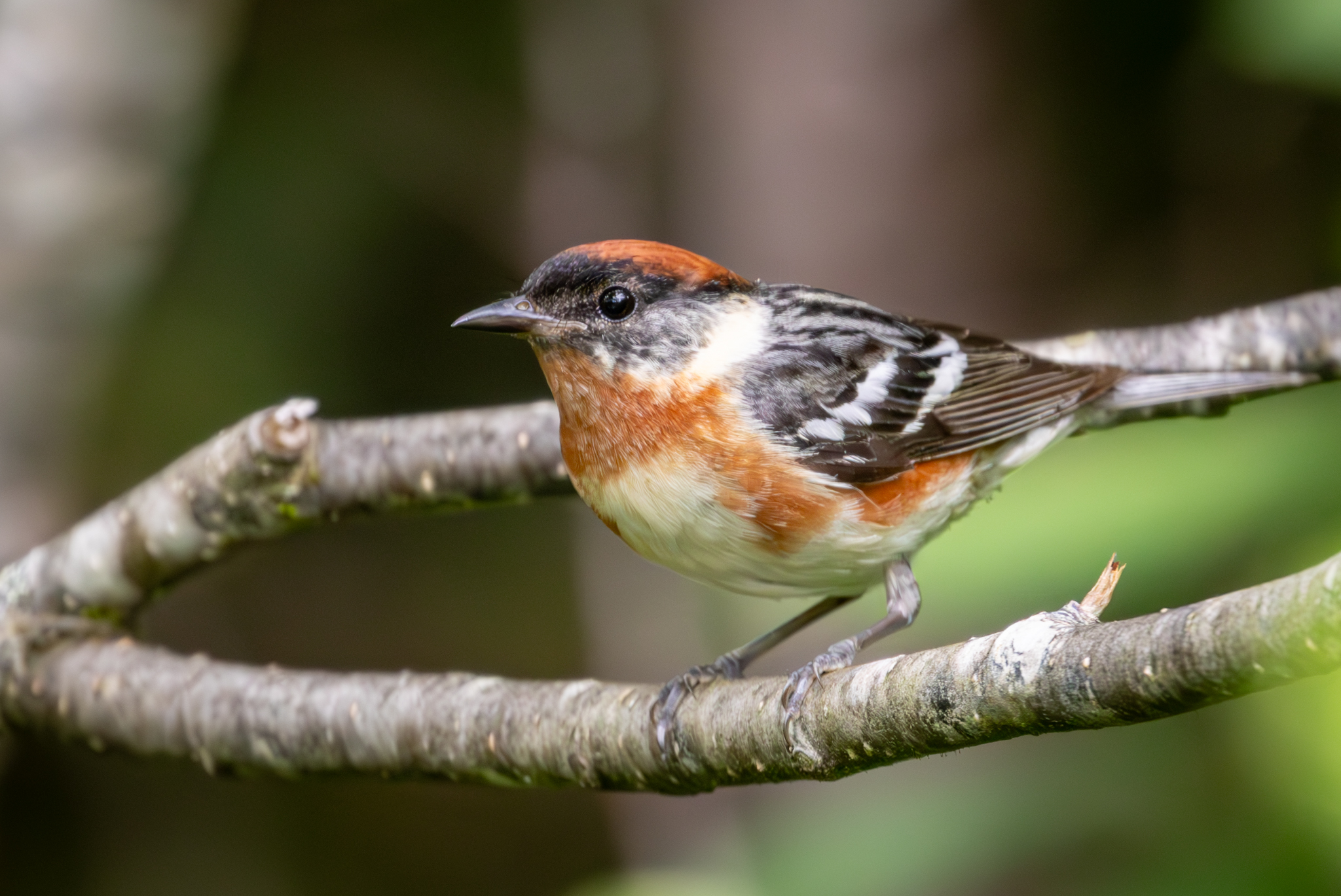
Lovely pictures!